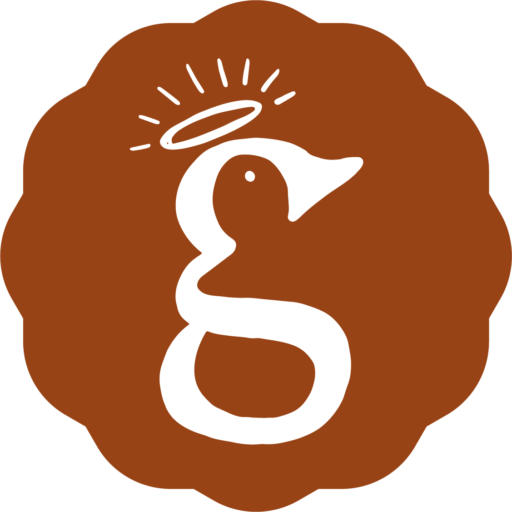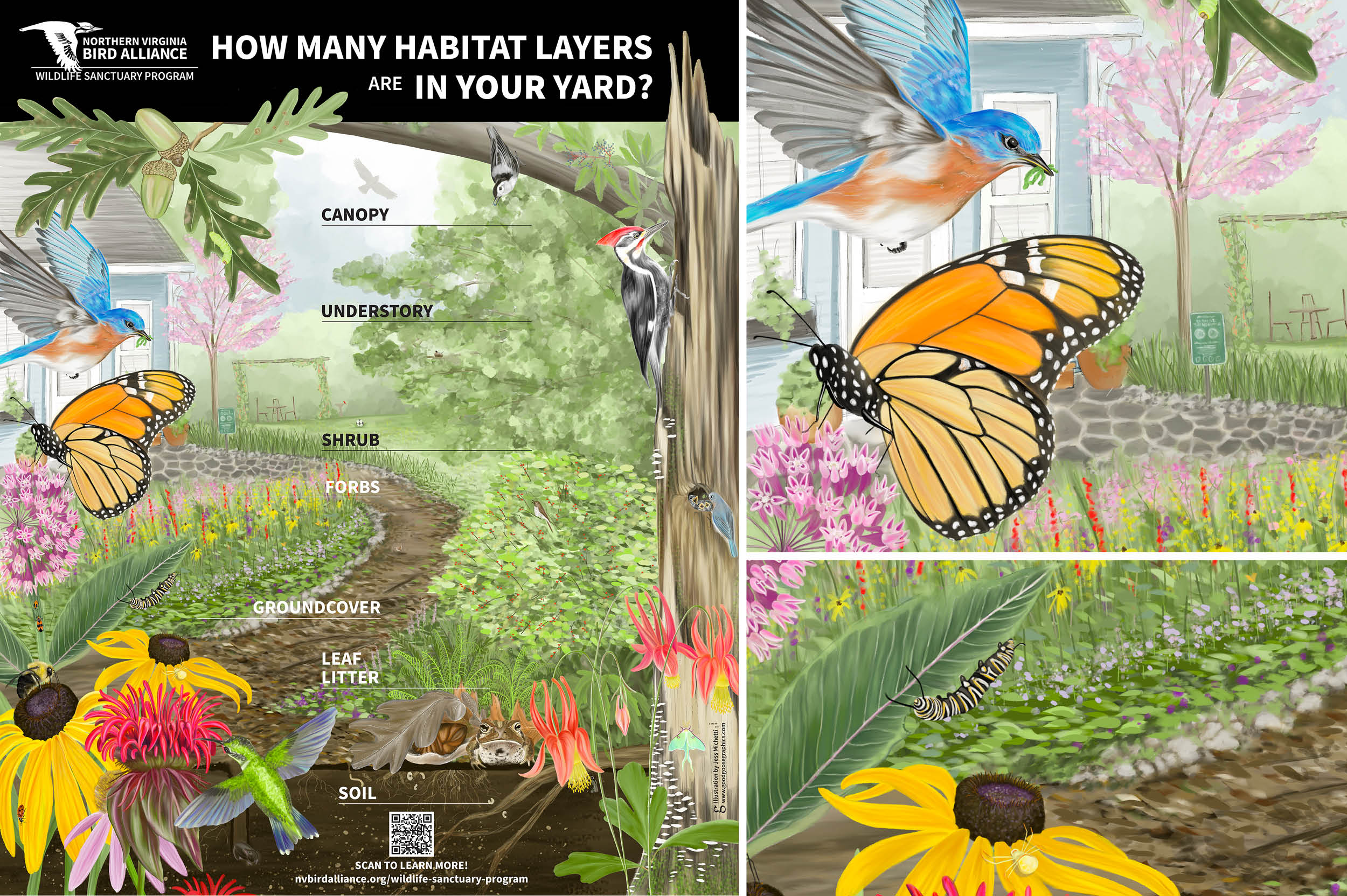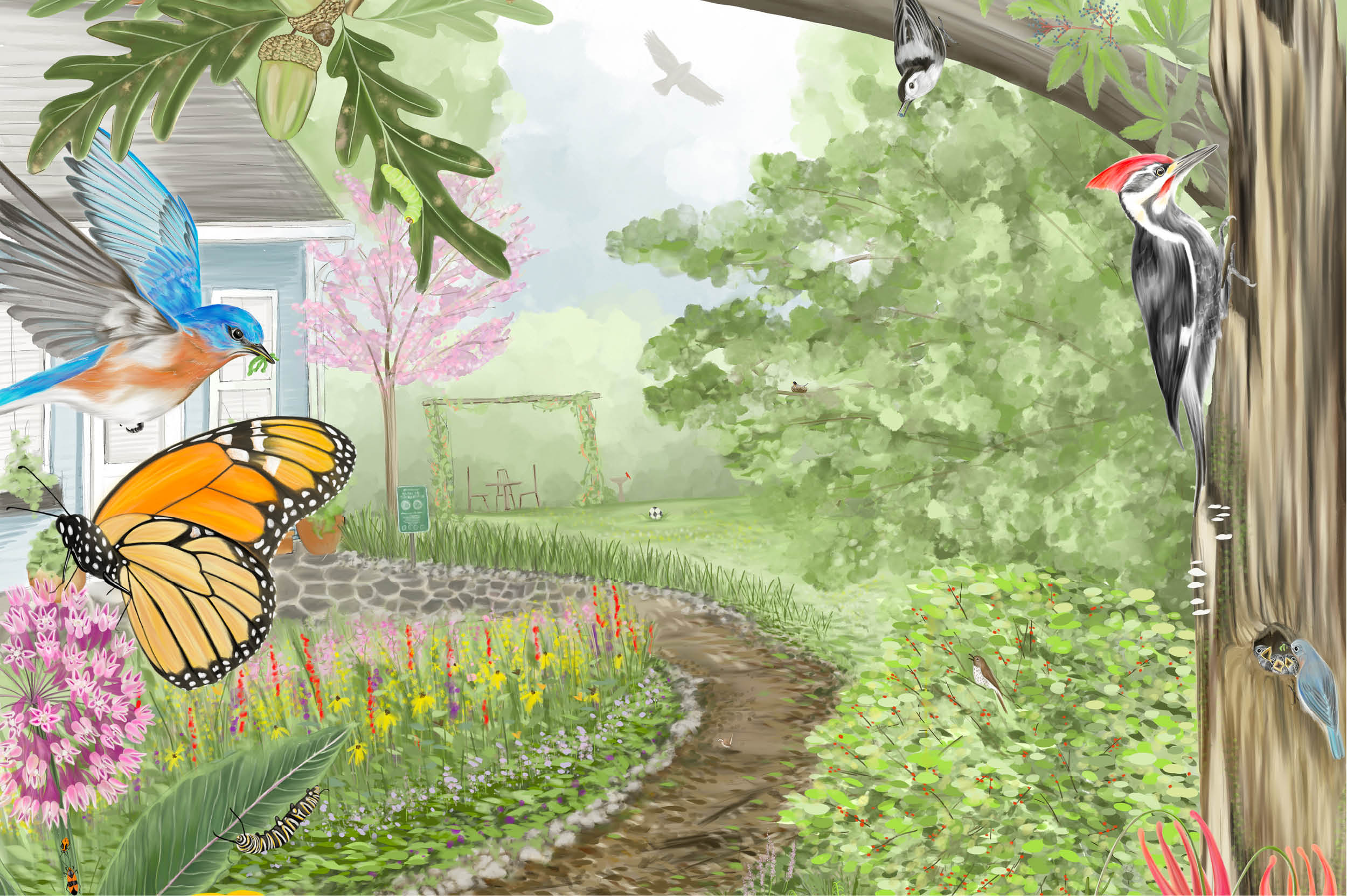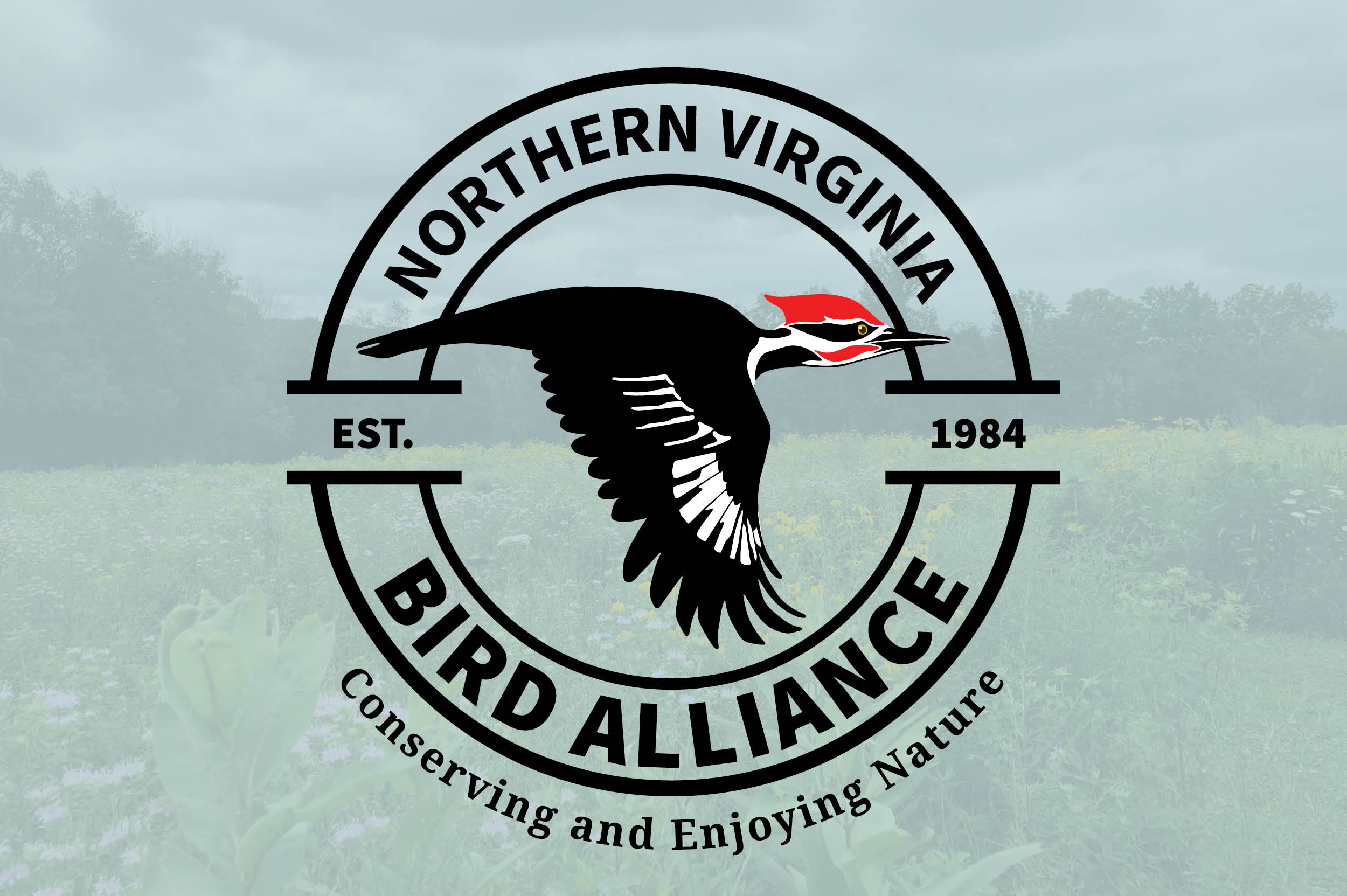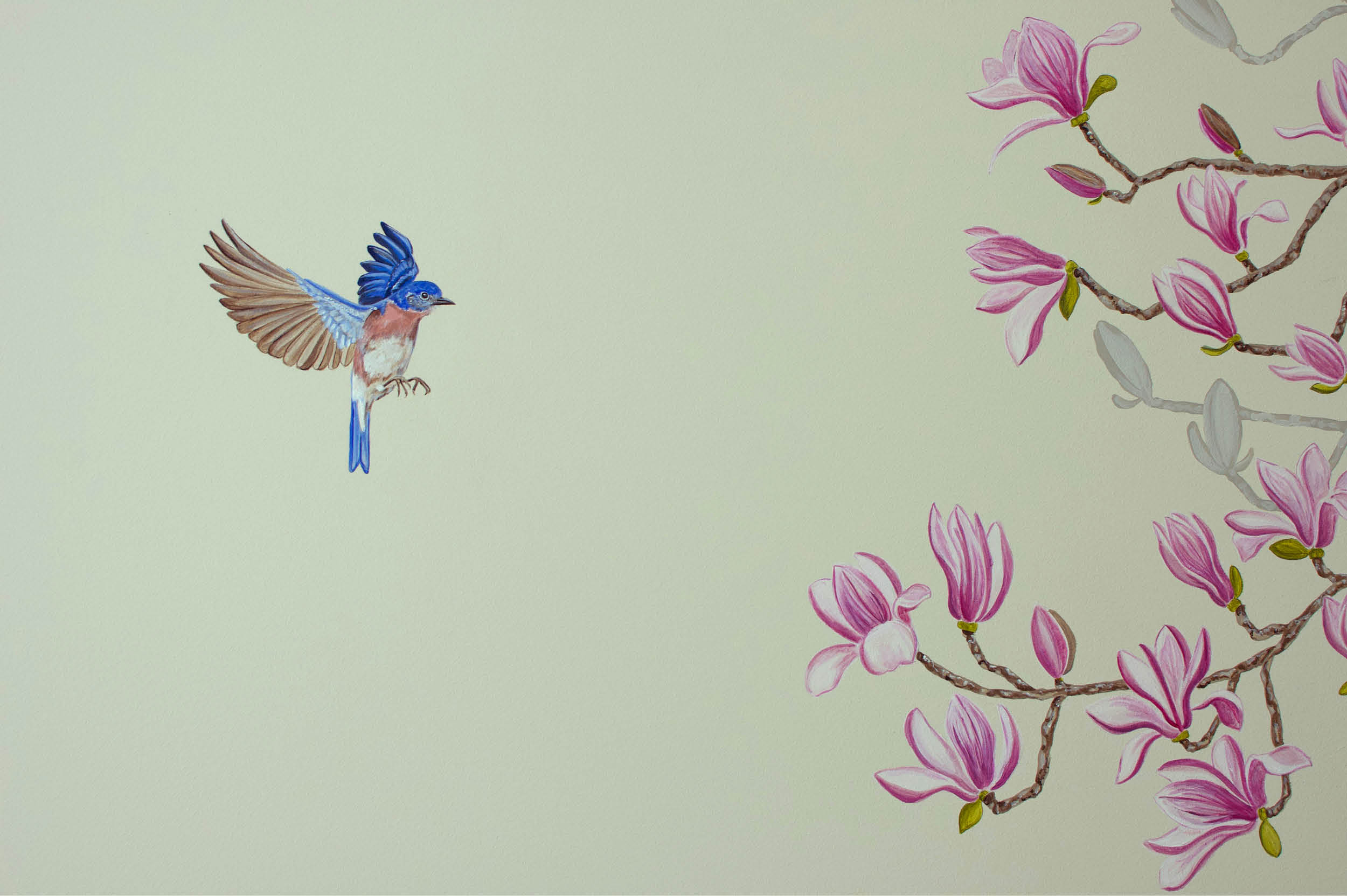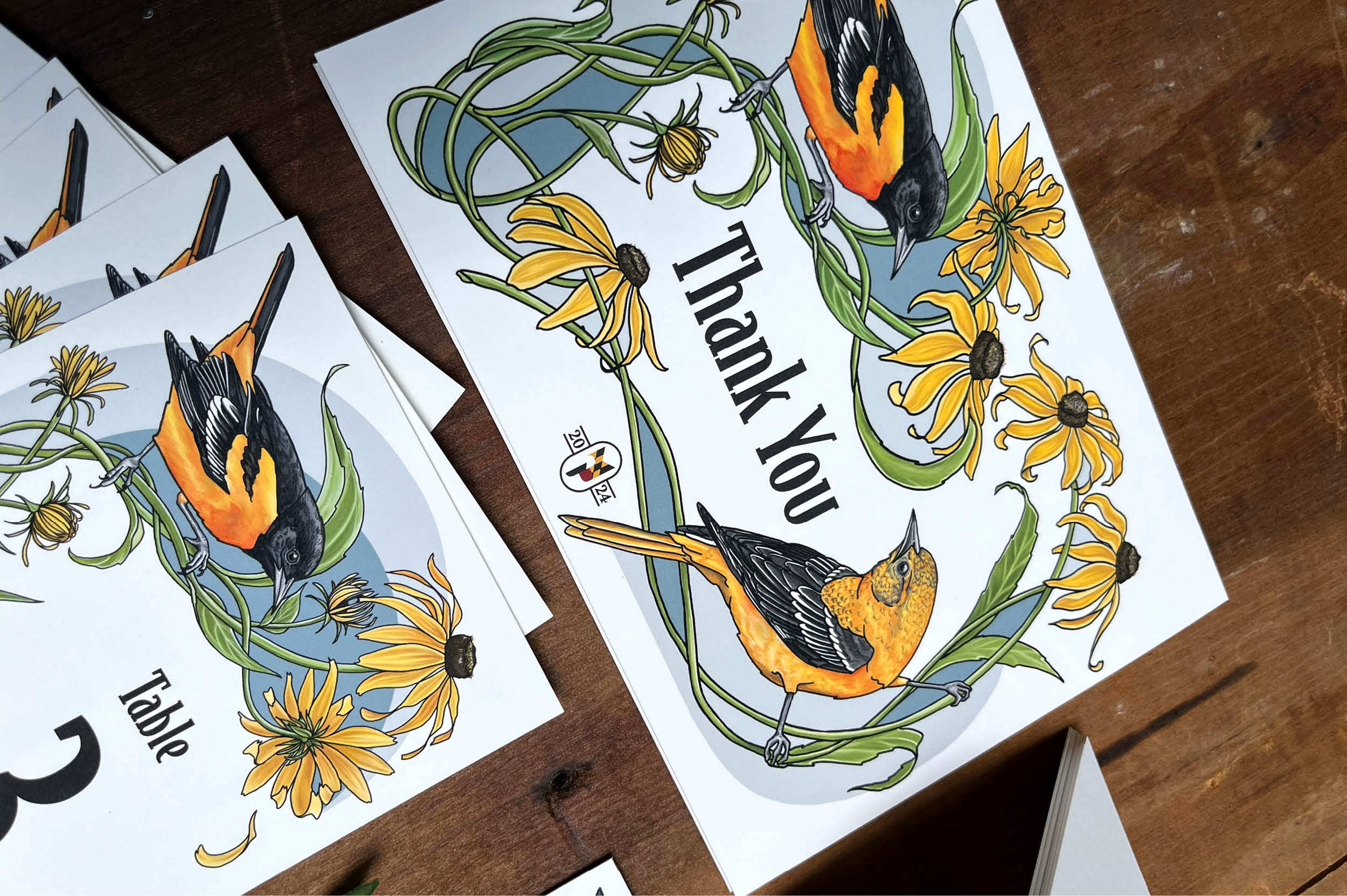
I have been working with the Northern Virginia Bird Alliance (formerly Audubon Society of Northern Virginia) as part of their communications team since 2019, and have had the opportunity to work with many incredibly talented, experienced people with diverse backgrounds within the organization. Before working with the ladies that run the Wildlife Sanctuary Program (formerly Audubon at Home), I, like many homeowners, had no idea that non-native invasive plant species are having a terrible impact on our local ecosystems and that planting native species is crucial to maintaining healthy food webs, starting with the insects that eat them. Well, have I learned A LOT.

The Wildlife Sanctuary Program (formerly Audubon at Home) works with homeowners in northern Virginia to help educate the public on the importance of native plants and, perhaps most importantly, that each of us can have a positive impact for wildlife regardless of whether we have huge suburban back yards or tiny urban balconies. This group of intrepid volunteers visits properties upon request for free to assess what changes homeowners can make to improve their outdoor space for wildlife (not to mention larger ecosystem services). They can advise about identifying and removing invasive species, which natives to plant where, and what other provisions can be made to support insects, birds, mammals and amphibians (like water sources, leaf litter and cover). The goal, as Doug Tallamy has put it in his Homegrown National Park project, is “To regenerate biodiversity because all humans need healthy, productive ecosystems to survive.”
In order to support our local version of this mission here in northern Virginia, I have worked with the Wildlife Sanctuary Program on lots of communications projects, but my favorites are the illustrated pieces they entrusted me to create. Bringing art and conservation together is an ultimate goal for me, and the two projects below show, for me, that art can be a powerful tool for conveying conservation messages.
Researching and learning about the interdependencies of different plants, insects and animals quickly became a favorite part of producing these illustrations. Certain insects ONLY eat certain plants, and if those plants aren’t around, those insects, won’t be around either…and that’s bad news for the birds and other animals that depend on the insects for food. It’s been equally fascinating and frightening to learn about, and I’ve only scratched the surface.
Illustrated Trifold Brochure
WSP hands these out at tabling events, property visits and more. We wanted to create something both informative and beautiful, and also easy for ambassadors to print out at home. I hope these also get used as coloring sheets, for kids and adults alike!
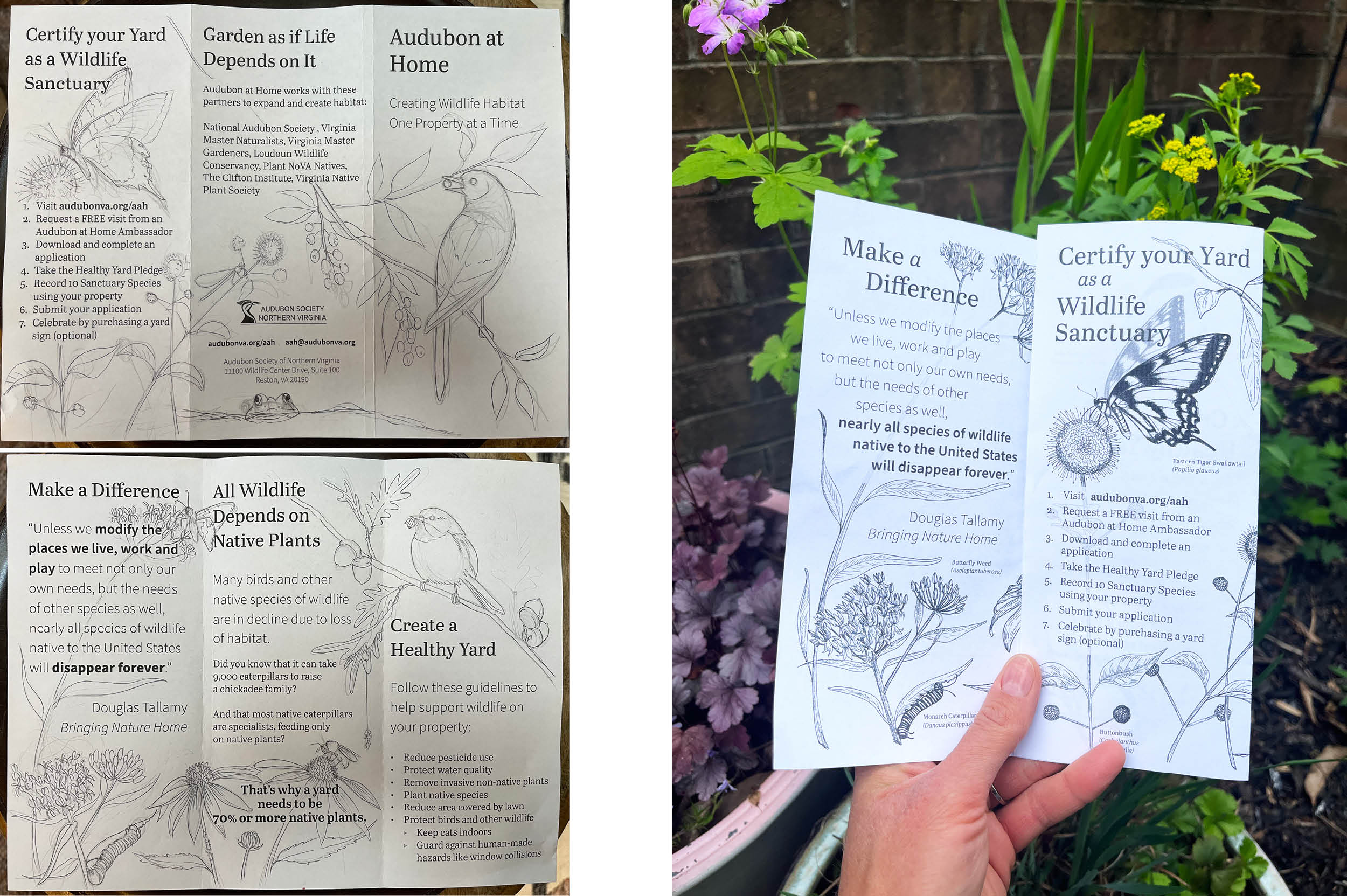
Left: Initial sketches and text layout for each side of the trifold brochure. I wanted to weave the illustrations through the text without affecting legibility.
Right: The finished, printed brochure. I like to think it offers little surprises every time you look at it. Plus, it makes a cool coloring sheet.
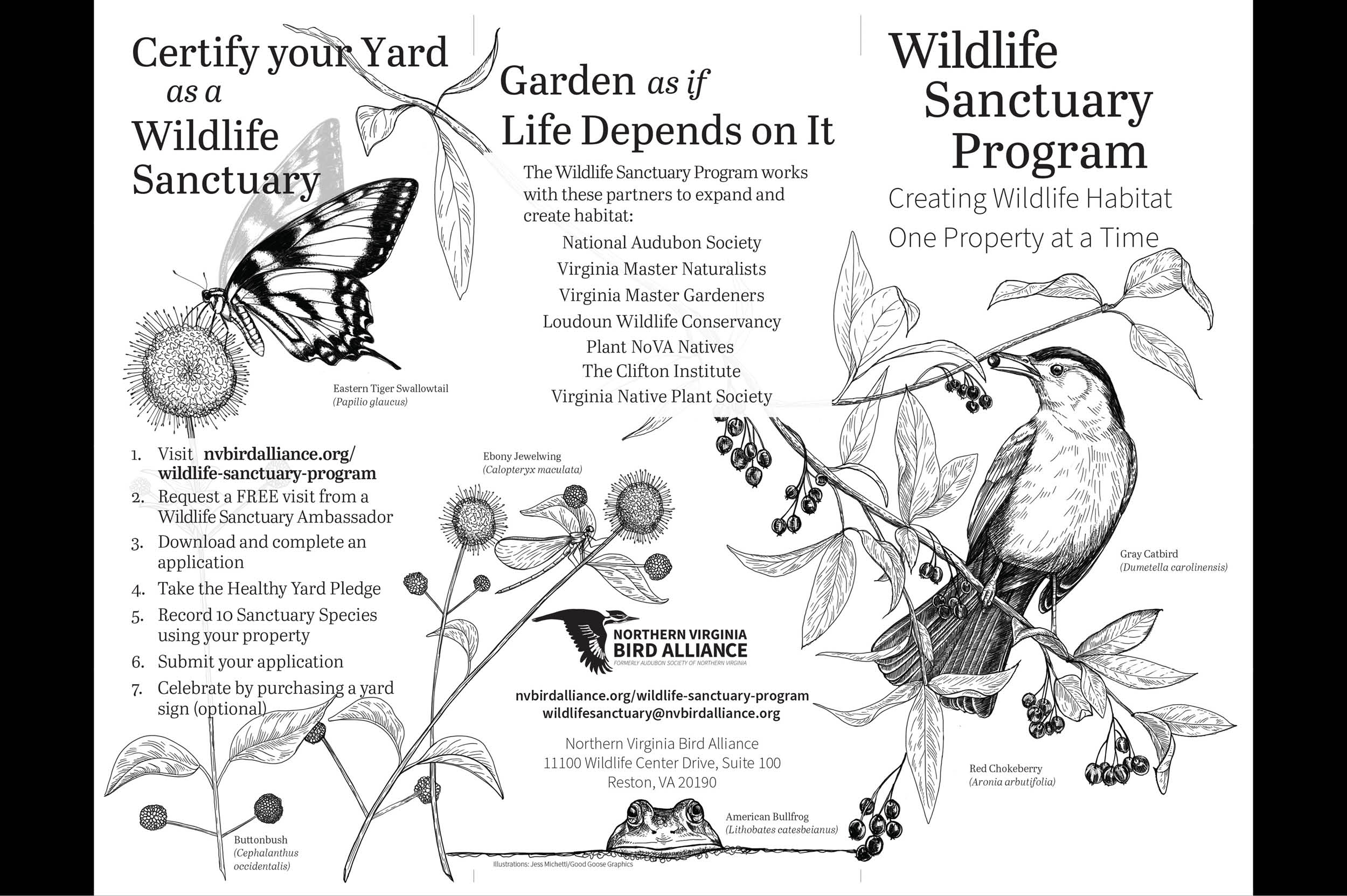
The print-ready front side of the trifold features all sorts of native plants, animals and insects, including a handsome Gray Catbird on the cover panel. These are designed to be easy to print on a home printer or inexpensive to have printed at a local office supply store.
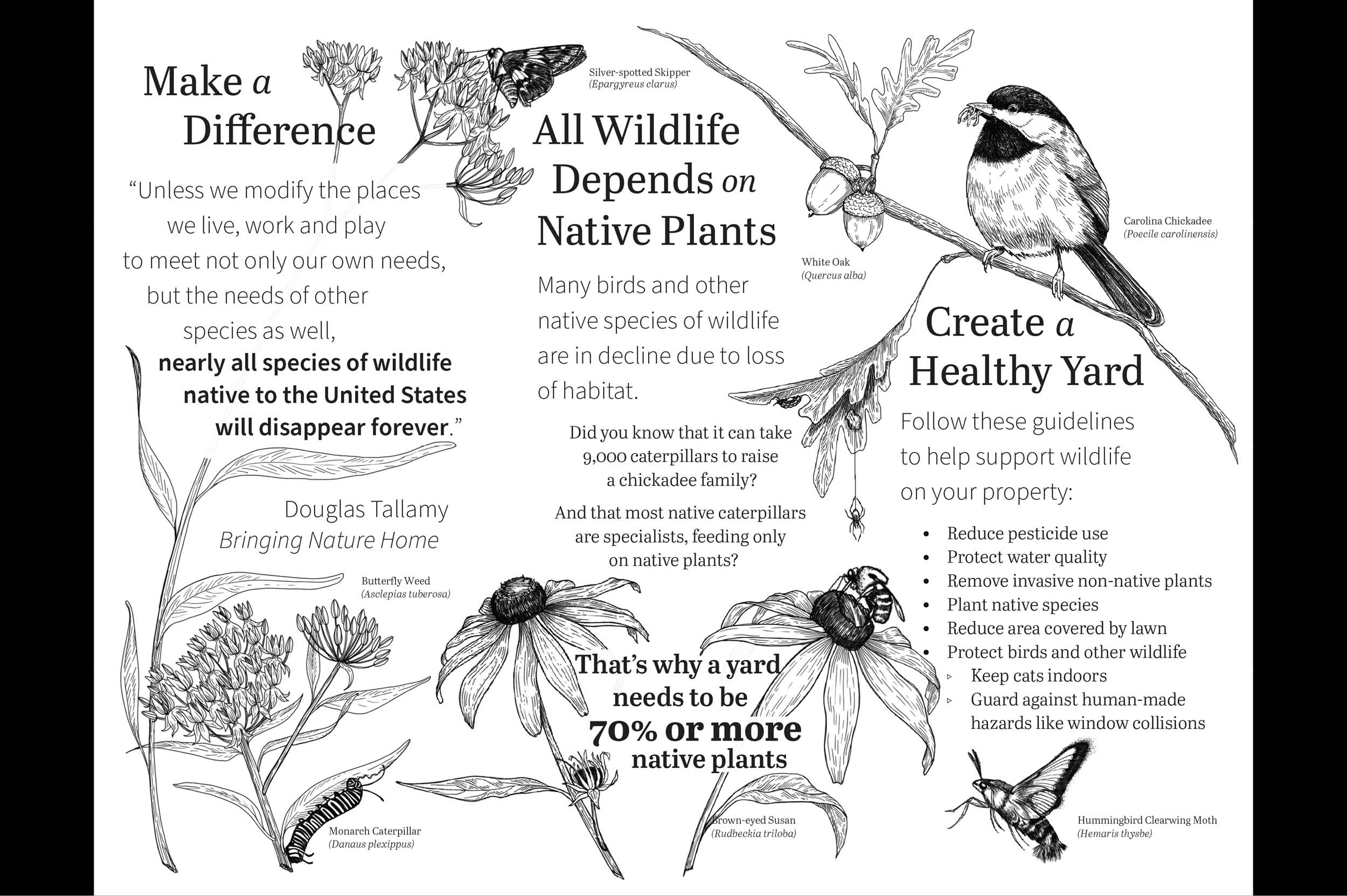
The inside of the trifold opens up to this spread of flowers, creatures and plants, including the mighty White Oak tree and a Monarch caterpillar on native Butterfly Weed.
Illustrated Table Display
WSP wanted an eye-catching illustration showing the various layers of habitat that can be present in a yard, and the fact that native plants, wildlife and people can co-exist beautifully.

I knew I wanted this draw viewers in with highly detailed foreground images and a perspective view, so the initial sketch on the left uses the idea of a garden path leading through a yard to a house. It was really important to suggest a “cared-for” garden environment that is integrated with a functional yard space and a home. The refined sketch on the right includes labels for each of the habitat layers, plants and creatures.

I built this illustration in layers using Procreate, a digital painting application. This allowed me to maintain some flexibility around the placement of each element within the final image. I could also focus on the details of the foreground elements away from the background, which I found really helpful.
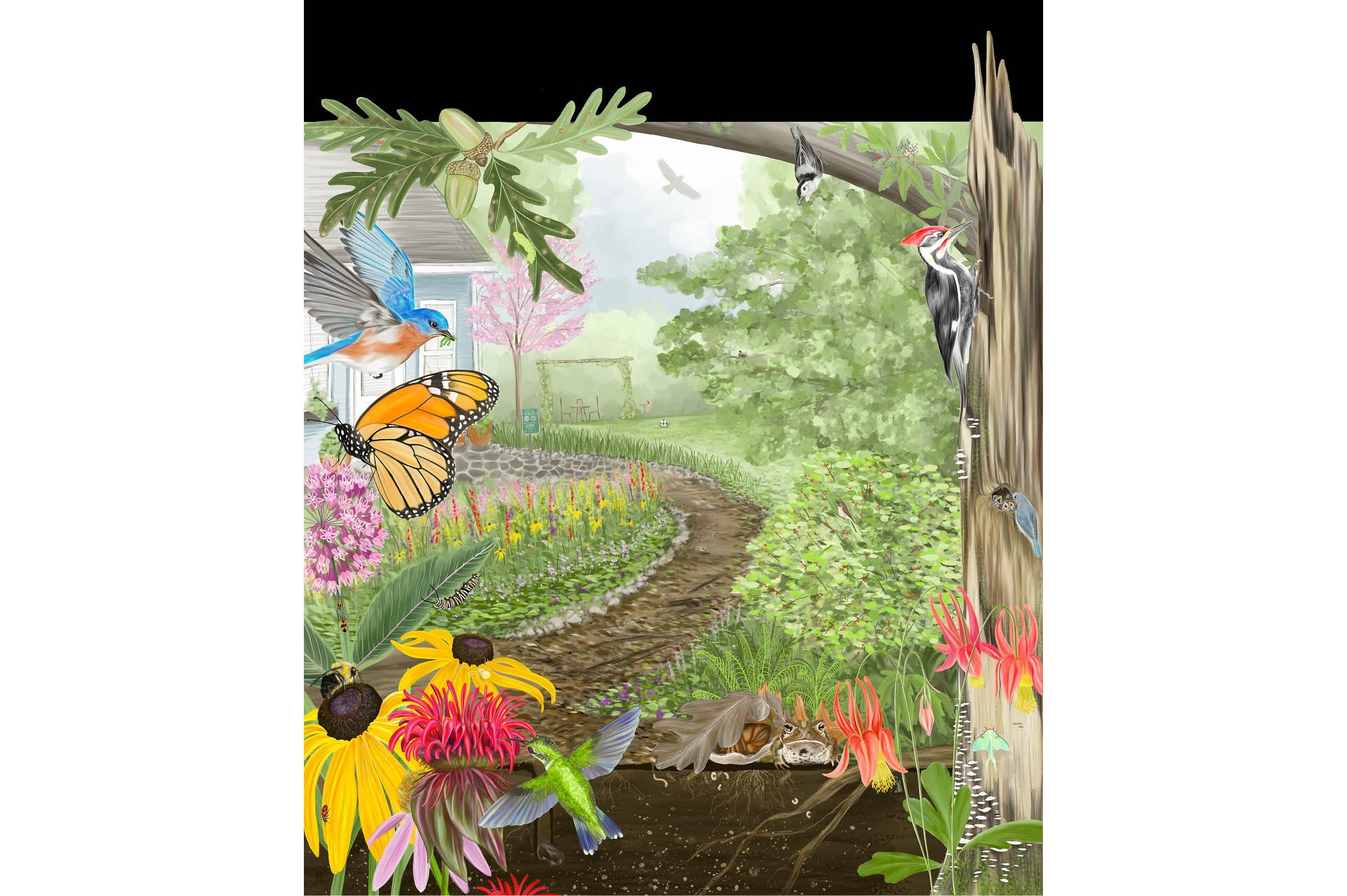
Here is the final merge of all the various individual elements. We even included a section cut at the ground to remind viewers that the soil is just as alive as what’s above it.
Left: The final display, with labels, logo and other information in place. The finished banner is 33″ wide x 40″ high.
Right: Details from the final image. I really loved drawing that Monarch caterpillar.
